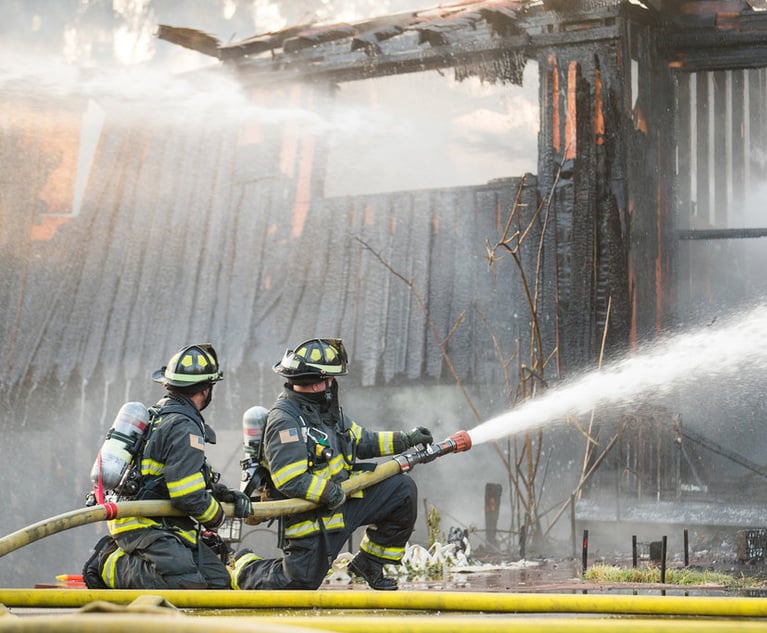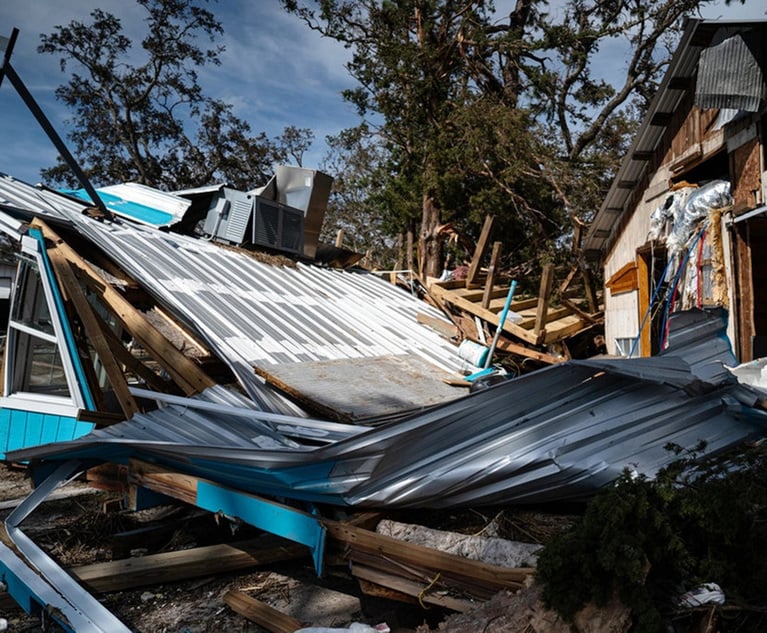Regulating Unmanned Aviation and Transferring Risk
On Aug. 29, 2016, the FAA implemented Part 107. The rule created a regulatory framework for the civil and commercial operations of small UAS, weighing 55 pounds or less. Generally, Part 107 requires operators to fly under 400 feet, within visual line of sight and only during daylight hours. Under this process, drone pilots are issued a Remote Pilot Certification and each drone is registered with the FAA, writes Gary Reshefsky.
July 24, 2017 at 11:21 AM
4 minute read
In the last year, the federal government has responded to the emerging commercial industry of Unmanned Aviation by issuing new regulations. A drone is operated for commercial purposes whenever the operator is being paid to utilize the drone or it is used in furtherance of a business. The Federal Aviation Administration (FAA) sought to address the widespread use of this technology by creating a path for commercial drone operators to obtain certification under a process known as the Small Unmanned Aircraft System (UAS) rule or (Part 107). On Aug. 29, 2016, the FAA implemented Part 107. The rule created a regulatory framework for the civil and commercial operations of small UAS, weighing 55 pounds or less. Generally, Part 107 requires operators to fly under 400 feet, within visual line of sight and only during daylight hours. Under this process, drone pilots are issued a Remote Pilot Certification and each drone is registered with the FAA. One of the requirements of Part 107 is that the drone pilot completes an online knowledge course and passes an exam. Part 107 also created a process for operators to obtain exemptions to its rules if the operator can prove mitigating factors to support the exemption. To date, more than 900 of these exemptions have been granted, with the vast majority permitting night time operations of drones.
The FAA has a separate set of regulations for hobbyist drone operators. On May 19, it was decided by the U.S. Court of Appeals that hobbyist operators are not required to be registered. This decision, however, does not affect commercial drone operators.
Prior to Part 107, commercial drone operation was only legal through a tedious process known as Certificate of Waiver or Authorization (COA) 333 Exemptions. Since the introduction of Part 107, more than 30,000 Part 107 certifications have been issued. Operators in Florida have obtained the second most certifications in the United States, just behind California.
This content has been archived. It is available through our partners, LexisNexis® and Bloomberg Law.
To view this content, please continue to their sites.
Not a Lexis Subscriber?
Subscribe Now
Not a Bloomberg Law Subscriber?
Subscribe Now
NOT FOR REPRINT
© 2025 ALM Global, LLC, All Rights Reserved. Request academic re-use from www.copyright.com. All other uses, submit a request to [email protected]. For more information visit Asset & Logo Licensing.
You Might Like
View All
Once the LA Fires Are Extinguished, Expect the Litigation to Unfold for Years
5 minute read
Attorneys, Health Care Officials Face Nearly $80M RICO Suit Over Allegedly Fabricated Spreadsheet

Navigating Florida Property Insurance Claims in a Post-Fee-Shifting World
5 minute read
Back-To-Back Hurricanes' Impact on Florida Legal Work Will Go Beyond Usual Suspects
5 minute readTrending Stories
Who Got The Work
J. Brugh Lower of Gibbons has entered an appearance for industrial equipment supplier Devco Corporation in a pending trademark infringement lawsuit. The suit, accusing the defendant of selling knock-off Graco products, was filed Dec. 18 in New Jersey District Court by Rivkin Radler on behalf of Graco Inc. and Graco Minnesota. The case, assigned to U.S. District Judge Zahid N. Quraishi, is 3:24-cv-11294, Graco Inc. et al v. Devco Corporation.
Who Got The Work
Rebecca Maller-Stein and Kent A. Yalowitz of Arnold & Porter Kaye Scholer have entered their appearances for Hanaco Venture Capital and its executives, Lior Prosor and David Frankel, in a pending securities lawsuit. The action, filed on Dec. 24 in New York Southern District Court by Zell, Aron & Co. on behalf of Goldeneye Advisors, accuses the defendants of negligently and fraudulently managing the plaintiff's $1 million investment. The case, assigned to U.S. District Judge Vernon S. Broderick, is 1:24-cv-09918, Goldeneye Advisors, LLC v. Hanaco Venture Capital, Ltd. et al.
Who Got The Work
Attorneys from A&O Shearman has stepped in as defense counsel for Toronto-Dominion Bank and other defendants in a pending securities class action. The suit, filed Dec. 11 in New York Southern District Court by Bleichmar Fonti & Auld, accuses the defendants of concealing the bank's 'pervasive' deficiencies in regards to its compliance with the Bank Secrecy Act and the quality of its anti-money laundering controls. The case, assigned to U.S. District Judge Arun Subramanian, is 1:24-cv-09445, Gonzalez v. The Toronto-Dominion Bank et al.
Who Got The Work
Crown Castle International, a Pennsylvania company providing shared communications infrastructure, has turned to Luke D. Wolf of Gordon Rees Scully Mansukhani to fend off a pending breach-of-contract lawsuit. The court action, filed Nov. 25 in Michigan Eastern District Court by Hooper Hathaway PC on behalf of The Town Residences LLC, accuses Crown Castle of failing to transfer approximately $30,000 in utility payments from T-Mobile in breach of a roof-top lease and assignment agreement. The case, assigned to U.S. District Judge Susan K. Declercq, is 2:24-cv-13131, The Town Residences LLC v. T-Mobile US, Inc. et al.
Who Got The Work
Wilfred P. Coronato and Daniel M. Schwartz of McCarter & English have stepped in as defense counsel to Electrolux Home Products Inc. in a pending product liability lawsuit. The court action, filed Nov. 26 in New York Eastern District Court by Poulos Lopiccolo PC and Nagel Rice LLP on behalf of David Stern, alleges that the defendant's refrigerators’ drawers and shelving repeatedly break and fall apart within months after purchase. The case, assigned to U.S. District Judge Joan M. Azrack, is 2:24-cv-08204, Stern v. Electrolux Home Products, Inc.
Featured Firms
Law Offices of Gary Martin Hays & Associates, P.C.
(470) 294-1674
Law Offices of Mark E. Salomone
(857) 444-6468
Smith & Hassler
(713) 739-1250






